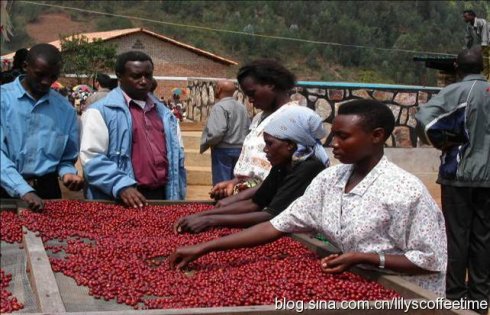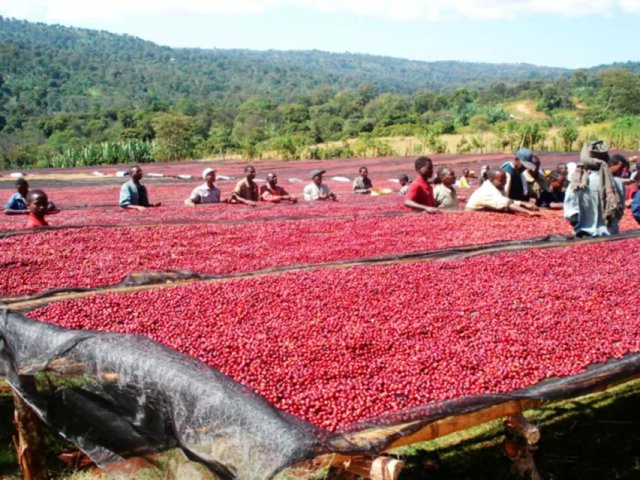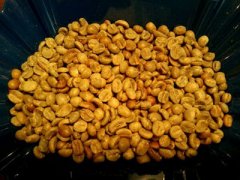Coffee Manor Guava Plain Manor Guava Plain Manor Guatemala New Oriental region Wine Sun treatment SL28 species
The guava plain estate in Guatemala's New Oriental region, named Siyi, is located in the easternmost part of Guatemala. Unlike Antigua, which is less than an hour's drive from the capital, New Oriental has to drive all the way to the easternmost border with Honduras. The 28 kinds of SL sun and water washing batches introduced this time are all customized micro-batches in cooperation with the manor owner. Collaborative microbatches have become an important enabler for the development of today's premium coffee, especially innovative microbatches, by providing incentives for farmers to produce specific batches through prior discussions with farmers and guaranteed price commitments to achieve our goals for flavor, quality and innovation.
Last year, a small amount of washed SL28 was produced in Guava Plain. This year, under the cooperation with traders, a new batch of sun-dried wine fragrance was added, with unique flavor. When cooperating with traders on this series, we also communicated on the spot about the harvesting standards and sun-dried treatment methods (such as turning and drying days). From the results, it can be said that it is a very happy harvest. Especially SL28 is still rare in Central America.
Sunlight: pineapple, melon, dried apricot, sugared lemon peel, bordeaux wine, green tea and cinnamon spice, rich sweetness and smoky plum aroma throughout.
SL28 is extremely rare in Central America. This tree species originated from Lake Tanganyika in East Africa. It was discovered in 1931. Its leaves are broad and reddish. It can adapt to quite high altitude environment. It has excellent drought resistance and disease resistance. It also has higher yield than traditional trees. The performance of flavor is also unique. In 1935, Scott Laboratory named this variety SL after the laboratory's initial letter, 28 is the selected serial number, and then planted in Kenya.
Bourbon descendants selected and cultivated by French and British missionaries and researchers in Kenya in the early 20th century. For centuries, Kenya has adapted to high concentrations of phosphoric acid soil, breeding Kenya bean special sour fragrance spirit, different from the Bourbon bean in Central and South America. This Kenyan native species was created in 1930 by Scott Laboratories and is known simply as SL. Agronomists wanted to find a pest-resistant and high-yield bourbon, and they got SL28 through experiments. SL28 is a genetic variant with a mixed lineage of French missionaries, mocha, and Yeomen tibica. SL28 was originally bred to produce high-quality, disease-resistant coffee beans in large quantities. Although SL28 did not yield as much as expected, the copper-leaf color and bean-like beans had great sweetness, balance and complexity, with notable citrus and dark plum characters.

Important Notice :
前街咖啡 FrontStreet Coffee has moved to new addredd:
FrontStreet Coffee Address: 315,Donghua East Road,GuangZhou
Tel:020 38364473
- Prev

Boutique coffee SL28 species of Guava Plain Manor in Guatemala New Oriental producing area
SL28 country: Guatemala production area: new Oriental Manor: guava Plain Manor producer: Mr. Benjamin Donado treatment: wine tanning treatment Variety: SL28 altitude: 1675 meters Flavor: pineapple, dried apricot, Red Wine Guatemala is the most important coffee producer in Central America.
- Next

Cuban Crystal Mountain Coffee Bean introduction to Tobacco-flavored Coffee Cuban Crystal Mountain Coffee of Ancient quality
Located in the West Indies, the Republic of Cuba has a detached and pristine natural environment, the beautiful Caribbean Sea and the world-famous Crystal Mountain Coffee. In 1748, coffee was introduced into Cuba from Domiga, and Cuba began to grow coffee ever since. With fertile land, humid climate and abundant Rain Water, Cuba can be called a natural treasure land for coffee cultivation. The suitable natural condition is the growth of coffee trees.
Related
- Detailed explanation of Jadeite planting Land in Panamanian Jadeite Manor introduction to the grading system of Jadeite competitive bidding, Red bid, Green bid and Rose Summer
- Story of Coffee planting in Brenka region of Costa Rica Stonehenge Manor anaerobic heavy honey treatment of flavor mouth
- What's on the barrel of Blue Mountain Coffee beans?
- Can American coffee also pull flowers? How to use hot American style to pull out a good-looking pattern?
- Can you make a cold extract with coffee beans? What is the right proportion for cold-extracted coffee formula?
- Indonesian PWN Gold Mandrine Coffee Origin Features Flavor How to Chong? Mandolin coffee is American.
- A brief introduction to the flavor characteristics of Brazilian yellow bourbon coffee beans
- What is the effect of different water quality on the flavor of cold-extracted coffee? What kind of water is best for brewing coffee?
- Why do you think of Rose Summer whenever you mention Panamanian coffee?
- Introduction to the characteristics of authentic blue mountain coffee bean producing areas? What is the CIB Coffee Authority in Jamaica?

